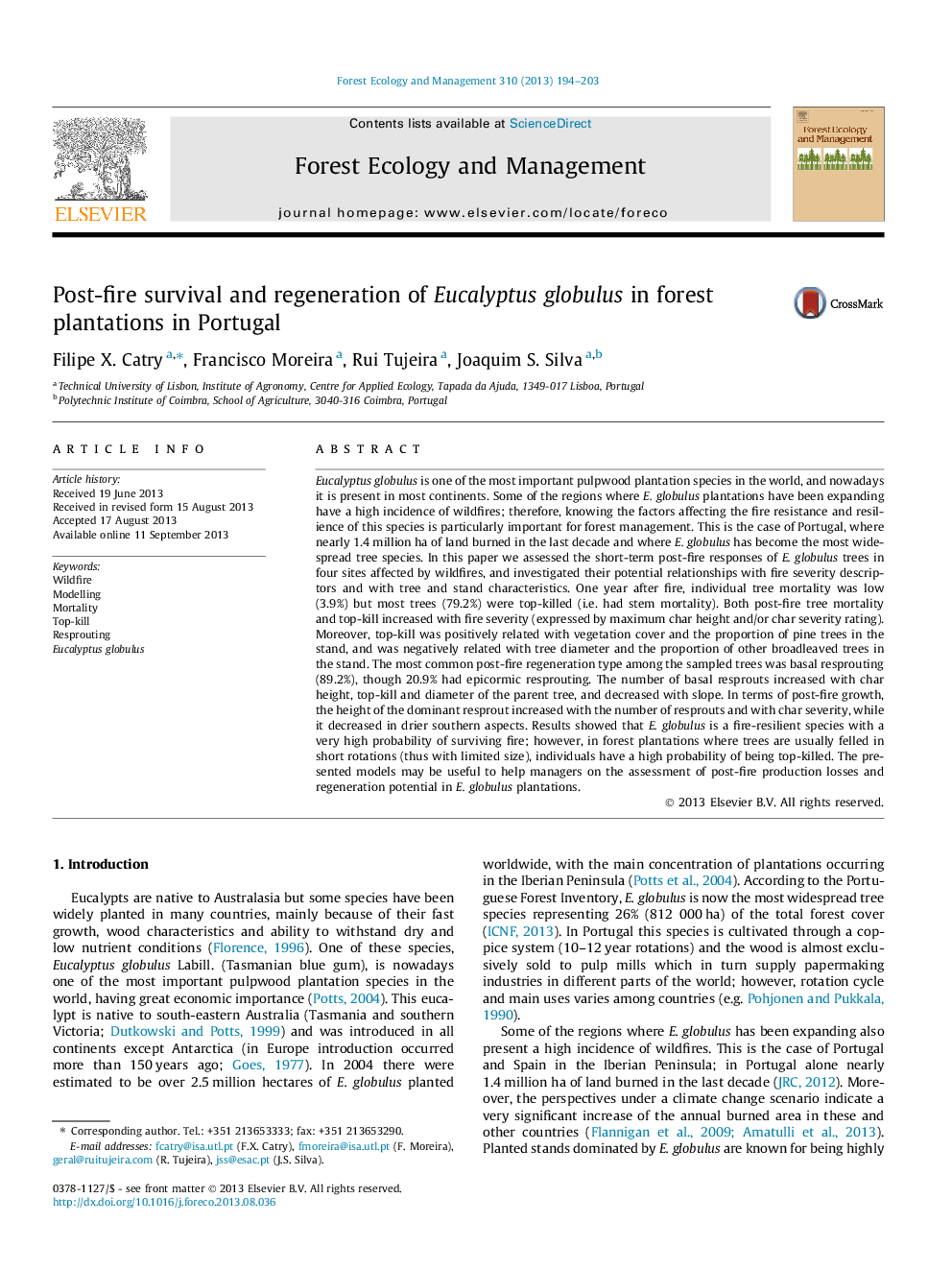| Article ID | Journal | Published Year | Pages | File Type |
|---|---|---|---|---|
| 6543664 | Forest Ecology and Management | 2013 | 10 Pages |
Abstract
Eucalyptus globulus is one of the most important pulpwood plantation species in the world, and nowadays it is present in most continents. Some of the regions where E. globulus plantations have been expanding have a high incidence of wildfires; therefore, knowing the factors affecting the fire resistance and resilience of this species is particularly important for forest management. This is the case of Portugal, where nearly 1.4Â million ha of land burned in the last decade and where E. globulus has become the most widespread tree species. In this paper we assessed the short-term post-fire responses of E. globulus trees in four sites affected by wildfires, and investigated their potential relationships with fire severity descriptors and with tree and stand characteristics. One year after fire, individual tree mortality was low (3.9%) but most trees (79.2%) were top-killed (i.e. had stem mortality). Both post-fire tree mortality and top-kill increased with fire severity (expressed by maximum char height and/or char severity rating). Moreover, top-kill was positively related with vegetation cover and the proportion of pine trees in the stand, and was negatively related with tree diameter and the proportion of other broadleaved trees in the stand. The most common post-fire regeneration type among the sampled trees was basal resprouting (89.2%), though 20.9% had epicormic resprouting. The number of basal resprouts increased with char height, top-kill and diameter of the parent tree, and decreased with slope. In terms of post-fire growth, the height of the dominant resprout increased with the number of resprouts and with char severity, while it decreased in drier southern aspects. Results showed that E. globulus is a fire-resilient species with a very high probability of surviving fire; however, in forest plantations where trees are usually felled in short rotations (thus with limited size), individuals have a high probability of being top-killed. The presented models may be useful to help managers on the assessment of post-fire production losses and regeneration potential in E. globulus plantations.
Related Topics
Life Sciences
Agricultural and Biological Sciences
Ecology, Evolution, Behavior and Systematics
Authors
Filipe X. Catry, Francisco Moreira, Rui Tujeira, Joaquim S. Silva,
